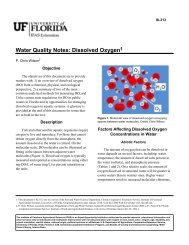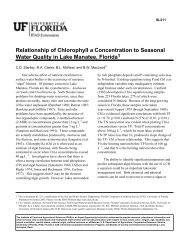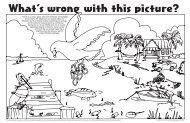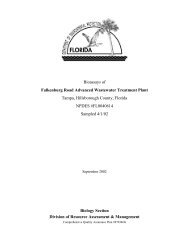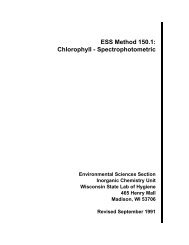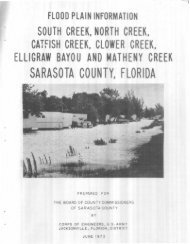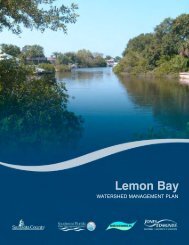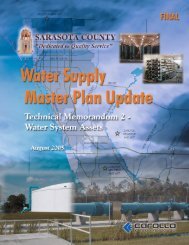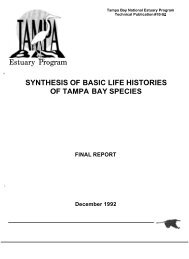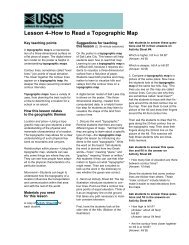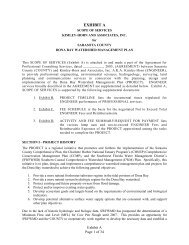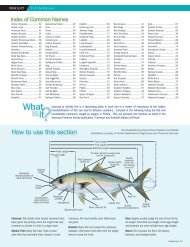Field Indicators of Hydric Soils in the United States - ITC
Field Indicators of Hydric Soils in the United States - ITC
Field Indicators of Hydric Soils in the United States - ITC
You also want an ePaper? Increase the reach of your titles
YUMPU automatically turns print PDFs into web optimized ePapers that Google loves.
<strong>Field</strong> <strong>Indicators</strong> <strong>of</strong> <strong>Hydric</strong> <strong>Soils</strong>Redox depletions. Bodies <strong>of</strong> low chroma (2 or less)hav<strong>in</strong>g value 4 or more where Fe/Mn oxideshave been stripped or where both iron andmanganese oxides and clay have been stripped.Redox deletions contrast dist<strong>in</strong>ctly or prom<strong>in</strong>entlywith <strong>the</strong> matrix. See Vepraskas (1994) forcomplete description.Redoximorphic features. Features formed by <strong>the</strong>processes <strong>of</strong> reduction, translocation, or oxidation<strong>of</strong> Fe and Mn oxides. Formerly calledmottles and low chroma colors (fig. 38). SeeVepraskas (1994) for complete description.Reduced matrix. Soil matrices that have low chromaand high value, but whose color changes <strong>in</strong> hue orchroma when exposed to air. See Vepraskas(1994) for complete description.*Reduction. For <strong>the</strong> purpose <strong>of</strong> <strong>the</strong> <strong>Indicators</strong>, when<strong>the</strong> redox potential (Eh) is below <strong>the</strong> ferric/ferrous iron threshold as adjusted for pH. Inhydric soils, this is <strong>the</strong> po<strong>in</strong>t when <strong>the</strong> transformation<strong>of</strong> ferric iron (Fe+++) to ferrous iron(Fe++) occurs (fig. 39).Relict features. Soil morphological features that donot reflect recent hydrologic conditions <strong>of</strong>saturation and anaerobiosis (fig. 40). SeeVepraskas (1994) for complete description.*Sapric. See Muck.Saturation. When <strong>the</strong> soil water pressure is zero orpositive, most all <strong>the</strong> soil pores are filled withwater.Sharp boundary. Used to describe redoximorphicfeatures that grade sharply from one color toano<strong>the</strong>r. The color grade is commonly less than0.1 millimeter wide (fig. 40).Figure 38. Redoximorphic features as required <strong>in</strong> many <strong>of</strong><strong>the</strong> <strong>Indicators</strong>. These redox concentrationsoccur as pore l<strong>in</strong><strong>in</strong>gs along root channels andped faces.S<strong>of</strong>t masses. Redox concentrations that are nothard, frequently with<strong>in</strong> <strong>the</strong> matrix, and whoseshape is variable.Soil texture. The weight proportion <strong>of</strong> <strong>the</strong> soilseparates for particles less than 2 mm.Figure 39. Reduction would probably occur <strong>in</strong> this saltmarsh throughout <strong>the</strong> year. The Indicator A4Hydrogen Sulfide would most likely occur here.Figure 40. Sharp boundaries, such as those shown here,may <strong>in</strong>dicate <strong>the</strong>se redoximorphic features arerelict.(430, FIHS, Ver. 5.01, March 2003) 29



